Chopping a banana. Since cutting a banana only changes its appearance, a new substance is NOT formed. That makes this an example of a physical change.
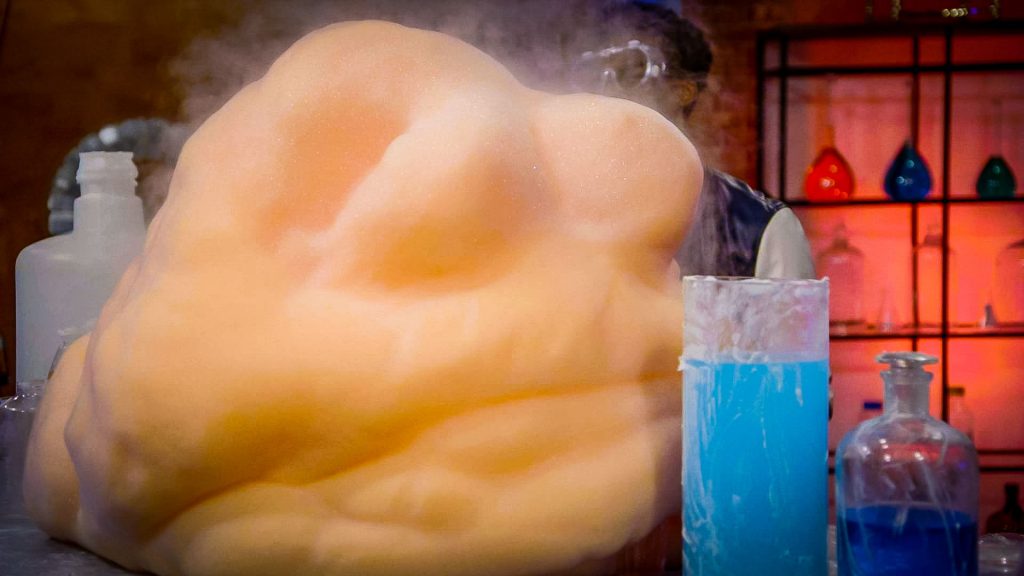
In a chemical change, a new substance is made, like when you burn a candle. In a physical change, no new substance is made, like when water turns to ice.
To better understand the difference between chemical vs. physical changes….
LET’S BREAK IT DOWN!
Chemical changes make new substances
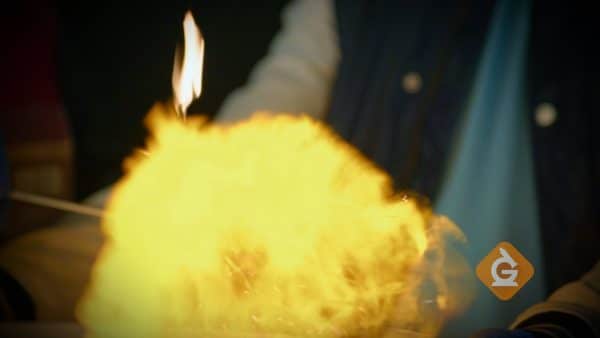
Anytime a new substance is made, a chemical change takes place. Usually two or more materials are combined and a new substance is formed. A chemical change can produce amazing explosions, like fireworks. Some chemical changes are a little more difficult to spot, like when a nail rusts.
If you notice bubbles being formed, or a change in color or temperature, there is a good chance a chemical change has taken place, but not always. Scientists can determine if a chemical change has occurred by asking this question: Was the substance formed present before? If the answer is no, then it is a chemical change.
Since chemical changes make new substances, most of them cannot easily be undone. For example, when you burn wood, you can't really turn the gases back into a log very easily.
Physical changes do not make a new substance.
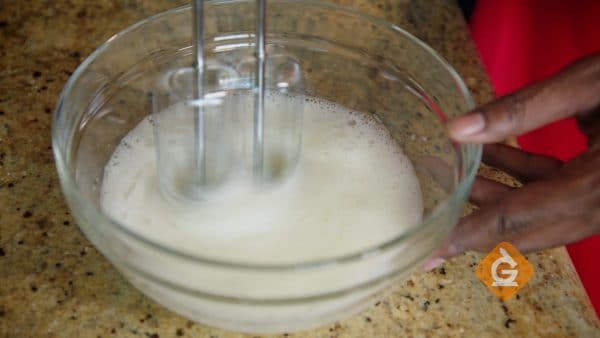
Physical changes come in many forms. It can be a change in the shape or appearance of an object, like crumpling a piece of paper, or cutting, bending, or dissolving something.
Since objects do not become a different substance during a physical change, it is usually easy to reverse the change. For example, if you dissolve sugar in water you can easily reverse the change by evaporating the water from the solution. When all the water evaporates, sugar crystals will be left behind.
Physical changes also happen when matter changes states.
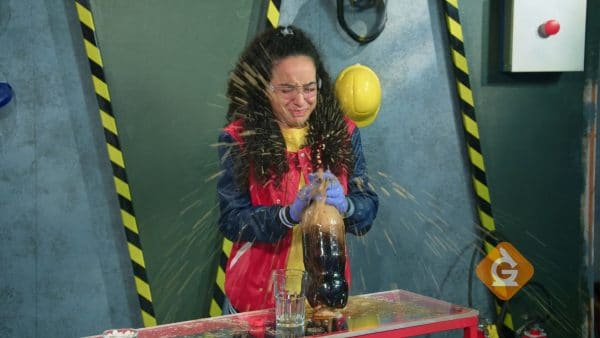
There are three common states of matter: solid, liquid, and gas. When a substance changes states (from a liquid to a gas, for example), it is undergoing a physical change.
In the video, when the gallium spoon melted in hot water, the gallium did not become a different metal. Melting is an example of a phase change, where a solid is changed to a liquid. Freezing and boiling are also physical changes.
Chemical and physical changes are all around us.
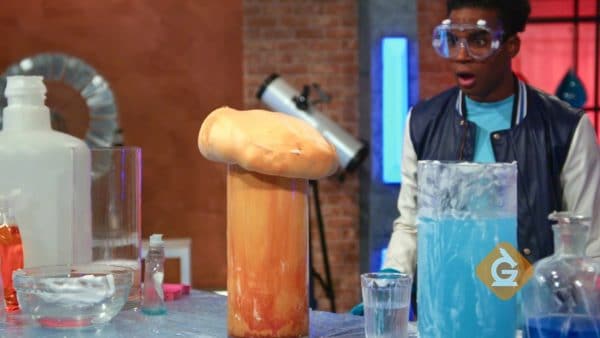
Chemical and physical changes take place around you all the time. When you make cereal for breakfast, combining the milk and cereal is a physical change. When you eat the cereal, a chemical change happens during digestion.
Sometimes, it can be difficult to tell if a chemical or physical change is taking place. In the video, Dr. Jeff and the team explore a few different reactions to determine if they are chemical or physical changes, by figuring out if the material made after the reaction was present before the reaction.
EXAMPLES OF PHYSICAL AND CHEMICAL CHANGES
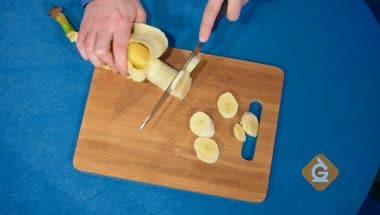
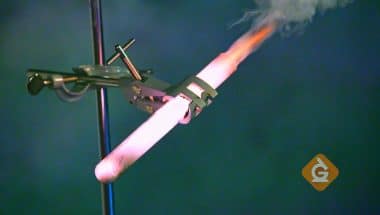
Burning a gummy bear. In the video, when the gummy candy was placed into a test tube with the oxidizer, the gummy candy burned up and created new chemicals. Since new chemicals were formed, it is an example of a chemical change.
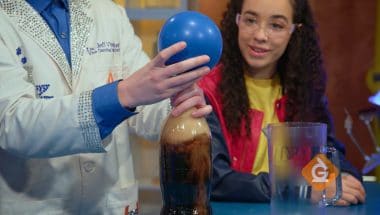
Coke and Mentos. Mixing Coke and Mentos looks like a chemical change, but since the gas released is carbon dioxide AND it was present before the foaming happened, it is actually a physical change.
VOCABULARY FOR PHYSICAL AND CHEMICAL CHANGES
DISCUSSION QUESTIONS FOR PHYSICAL VS. CHEMICAL CHANGES
What happens when Zoe stirs the very hot water with the spoon made from Gallium metal? What kind of change happens?
What kind of change happens when Dr. Jeff puts the gummy candy into a tube containing oxidizer? Why?
What method did the team use to test what type of gas was produced in the reaction between the Mentos and soda?
When Zoe pours the carbon dioxide gas onto the candles, why do they go out one by one?
What evidence did the team find that the reaction between the Mentos and soda was a physical change?
What is a flame test and what can we learn from it?
Explain how the reaction of a flame to carbon dioxide is different from the reaction of a flame to hydrogen in terms of cause and effect.
What is a mixture?
Why is whipping egg whites a physical change?
Skip, I will use a 3 day free trial
Enjoy your free 30 days trial
We use cookies to make your experience with this site better. By using this site you agree to our use of cookies. Click "Decline" to delete and block any non-essential cookies for this site on this specific property, device, and browser. Please read our privacy policy for more information on the cookies we use.Learn More
We use cookies to improve your experience. By using this site, you agree to our use of cookies. Click "Decline" to block non-essential cookies. See our privacy policy for details.Learn More






